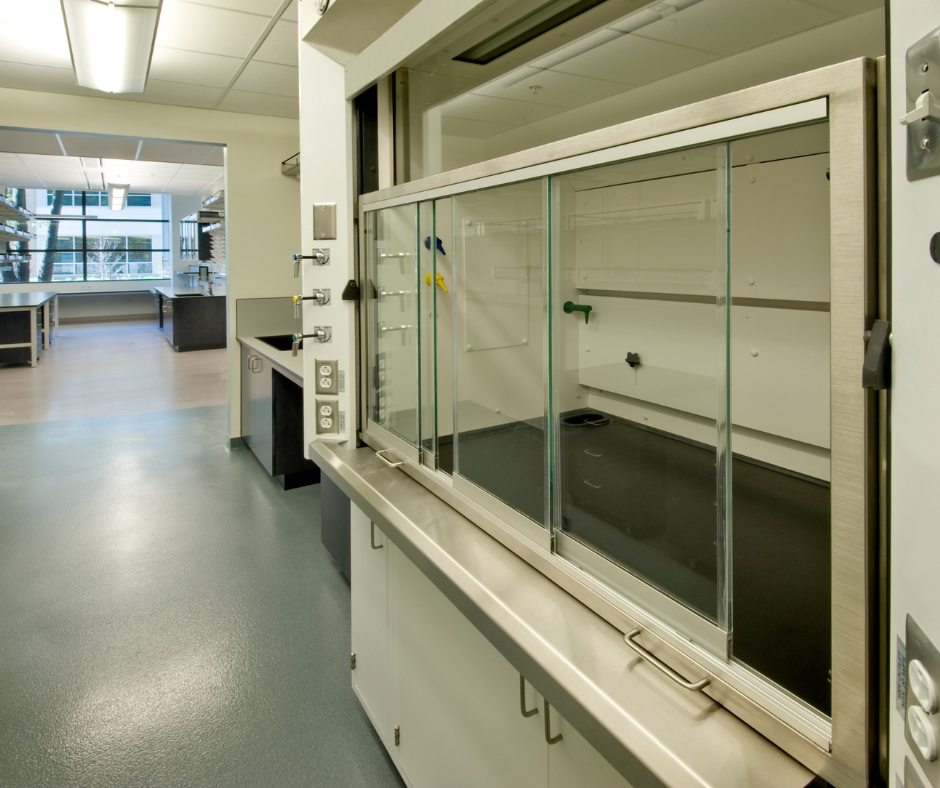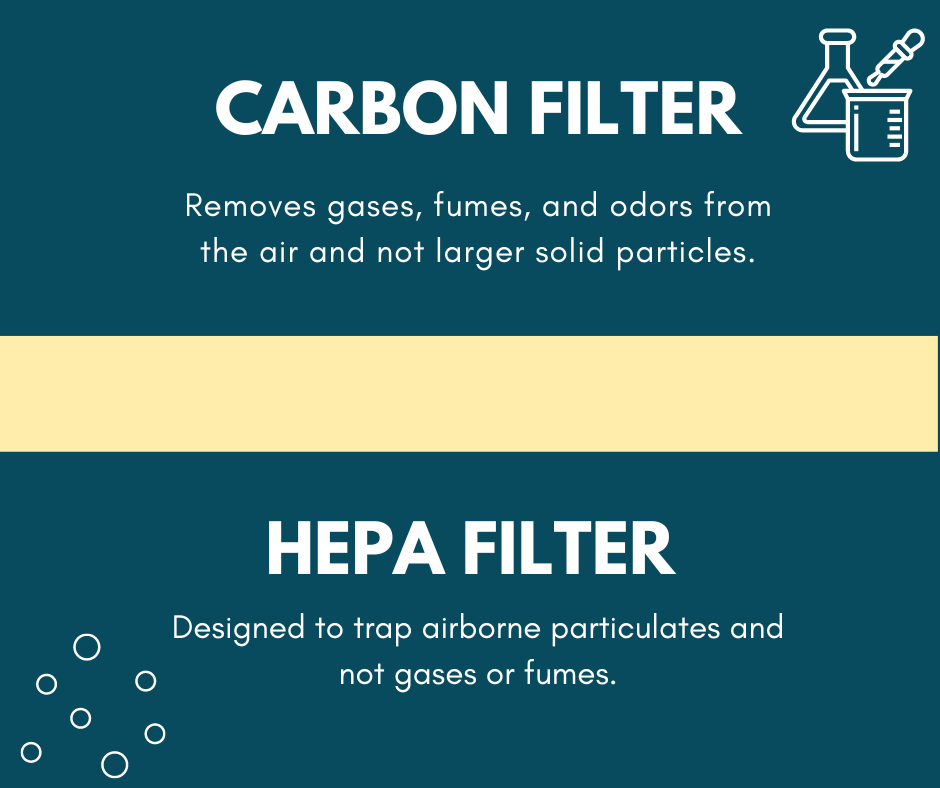The primary purpose of a fume hood is to protect lab workers while working with toxic fumes, gases, and chemicals by filtering the air inside the laboratory. But how exactly do fume hoods achieve this, and do fume hoods have HEPA filters?

Chemical Fume Hoods
There are several different types of fume hoods and the type that will work best for your workspace will depend on several factors such as:
- chemicals you will be working with
- the size of your work area
- budget
- ductwork in the building
Bench-top fume hoods require a supporting base cabinet, a work surface, a blower, and ductwork. Floor-mounted fume hoods are quite large and while they can be custom-made to fit your laboratory, they typically require significant space. Floor-mounted fume hoods can be ducted or ductless and filtered or unfiltered depending on your needs. Filtered fume hoods are equipped with a carbon filter.
If the purpose of your fume hood is to give demonstrations or teach, a double-faced or portable fume hood may be the best choice for your workspace. Double-faced and portable fume hoods are ductless. Ductless fume hoods contain carbon filters to clean contaminated air before it recirculates back into the work area. Carbon filters remove gases, fumes, and odors from the air and not larger solid particles. Carbon filters should not be confused with HEPA filters.
Other Types of Laboratory Equipment
Laminar Flow Hoods
Laminar flow hoods, also known as Clean Benches, are enclosed workstations that filter airflow across the work area. Laminar flow hoods offer some protection to the user but are designed primarily to protect the substance within the hood from airborne particles. These hoods are typically used when working with substances that are not harmful to laboratory personnel. To capture airborne particles that could contaminate the sample being worked on, class II and class III laminar flow hoods are equipped with HEPA filters. Though class I laminar flow hoods create an airflow from the laboratory into the chamber in a similar design to chemical fume hoods, they are not the same.
Bio-Safety Cabinets
Bio-safety cabinets remove solid particles from the air. The particulates are removed through the use of HEPA filters. Clean air is then recirculated back into the laboratory. Though equipped with a HEPA filter, the filter cannot stop harmful gas vapors from being recirculated. When working with toxic vapors, a fume hood is the equipment that should be used. A bio-safety cabinet should never be used as a fume hood.
What is a HEPA Filter?
The United States Environmental Protection Agency defines high-efficiency particulate air (HEPA) filters as filters that remove at least 99.97% of dust, pollen, mold, bacteria, and any airborne particles with a size of 0.3 microns (µm). HEPA filters are thicker than regular filters because they are designed to trap airborne particulates. Though HEPA filters remove particles from the air, they will not remove hazardous fumes or gases.

Do Fume Hoods Have HEPA FIlters?
The purpose of a fume hood is to protect the user by removing harmful vapors and gases from the air by either pushing the air out through the ductwork of the building or recirculating clean air back into the laboratory. HEPA filters are filters that remove solid particles, not vapors or gases. Because fume hoods are designed to be used when working with vapors and not particles, they use carbon filters and not HEPA filters.
National Laboratory Sales has the right fume hood, laboratory cabinet, or combination (fume hood + cabinets) for your laboratory. We are a one-stop shop for high-quality products and provide quick shipment on everything we sell. Contact National Laboratory Sales today!
Related Resources
- Why Is It Important To Work In A Fume Hood?
- Are Fume Hoods Necessary?
- What To Ask When Purchasing A Fume Hood

